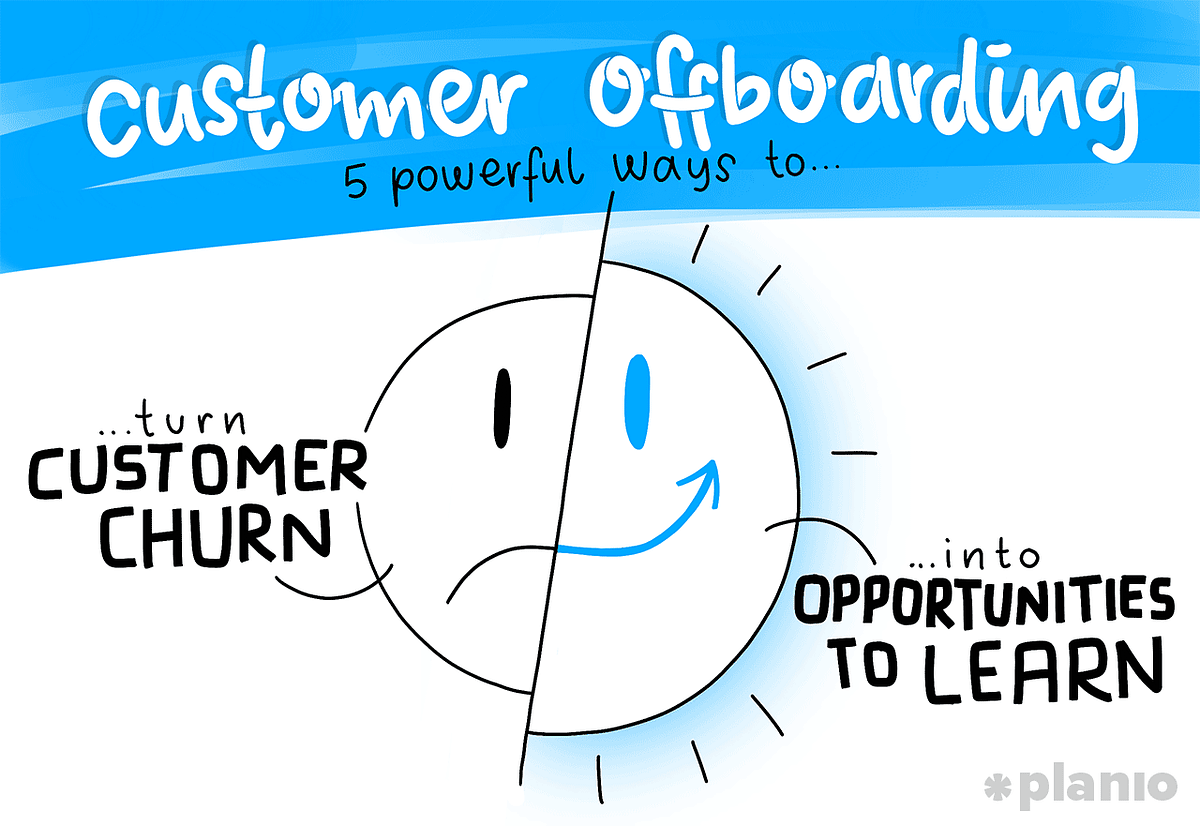When you’re trying to grow your business it’s easy to get CATV-customer acquisition tunnel vision. Acquiring new customers is sexy. It’s exciting. And it makes you feel good because more people want what you’ve made.
But what happens when those users decide they want to leave?
The majority of advice on offboarding focused on employee offboarding-the process you go through when a teammate leaves. The goal of employee offboarding is to help you understand what went wrong, why they chose to leave, and how you can improve your culture and workflows to keep future employees happy.
It’s a powerful opportunity to learn from experience and get valuable feedback. So why limit offboarding to just your employees?
User offboarding–how you treat, talk to, and learn from customer churn–is just as important.
While we all love to hear why people want to use our products, it’s almost more important to know where we’re dropping the ball.
In this guide, we’ll show you exactly what you need to do along with some powerful offboarding examples other companies are already using.
What is customer churn? And how can you use it as an opportunity to learn?
If you’re running any sort of SaaS or subscription-based business, customer churn is one of the most important metrics you should be tracking.
Customer churn is the percentage of customers that stopped using your company’s product or service during a certain time frame. In other words, people who decided they don’t need your product anymore and have moved on.
In its most basic form, you can calculate the customer churn rate by dividing the number of customers you lost during a timeframe (for example, one month) by the number of customers you had at the beginning of it.
It’s probably pretty obvious why this is an important number. If you lose more customers than you gain each month then your company is dying. However, while there’s tons of advice out there on how to reduce customer churn, it’s pretty much impossible to keep every customer you ever acquire.
People will move on. But every lost customer is a lesson.
It’s inevitable that you’ll make mistakes as you build your product, prioritize features that old users don’t want, or change your business model in a way that alienates certain users. People will move on. But every lost customer is a lesson.
When people move on (i.e. churn) it’s an opportunity to find out where you went wrong and work that into your future sprints, features, or even how you approach marketing and sales.
It never feels good to lose users, but instead of writing them off as “just not getting it,” use this as an opportunity to reach out, listen to their issues, and learn from it. Even better, this is an opportunity to turn churned customers into advocates and salespeople.
The Peak-End Rule: Why you should work hard to give your churned customers a good experience
Customers churn for all sorts of reasons. And not all of them are because you did something wrong. They might leave because you prioritized features they didn’t want or you didn’t fix bugs that were impacting their business.
However, they just as likely might have left because of something to do with their business. Maybe they switched directions or moved into a different market or even just ran into their own customer churn issues and had to lower costs.
You can think of these scenarios as two specific types of churn:
- Non-regrettable churn: These are the customers who leave you for reasons unrelated to your product, such as the end of a project, bad fit, or the company switching directions.
- Regrettable churn: These are the customers who leave you for reasons that you control, such as your product not addressing their specific needs, inconsistencies between what’s on your marketing site and what your product does, being unaware of features, running into too many bugs, thinking a competitor is a better option or having problems with support.
Creating a customer offboarding process helps you with both of these scenarios.
For customers with a non-regrettable churn, it helps you understand how they used your product and where they saw benefits (that you can work into your marketing plan).
While for those with regrettable churn, it helps you understand what your customers want from you or even change their minds by highlighting features or workflows they might have missed.
By properly offboarding both types of churned customers you’re not just letting them slip away. You’re actively reaching out and trying to understand their wants and needs. And this is a powerful thing.
As competition increases in every market, word-of-mouth marketing has become even more important. In fact, people are 90% more likely to trust and buy from a brand recommended by a friend.
#churn #saas #ux #marketing #design
